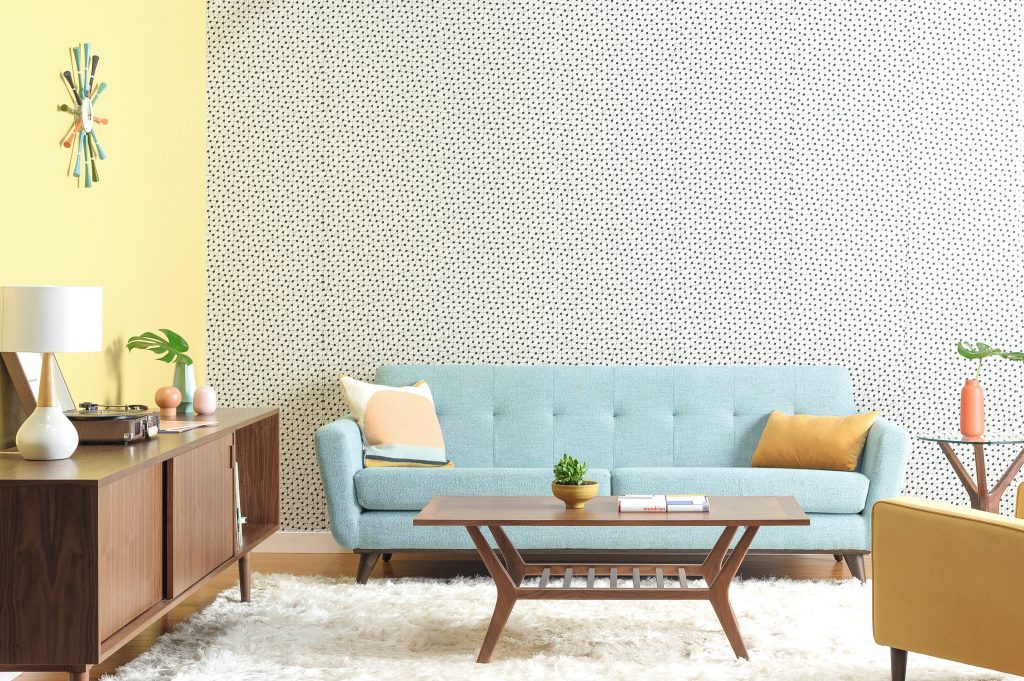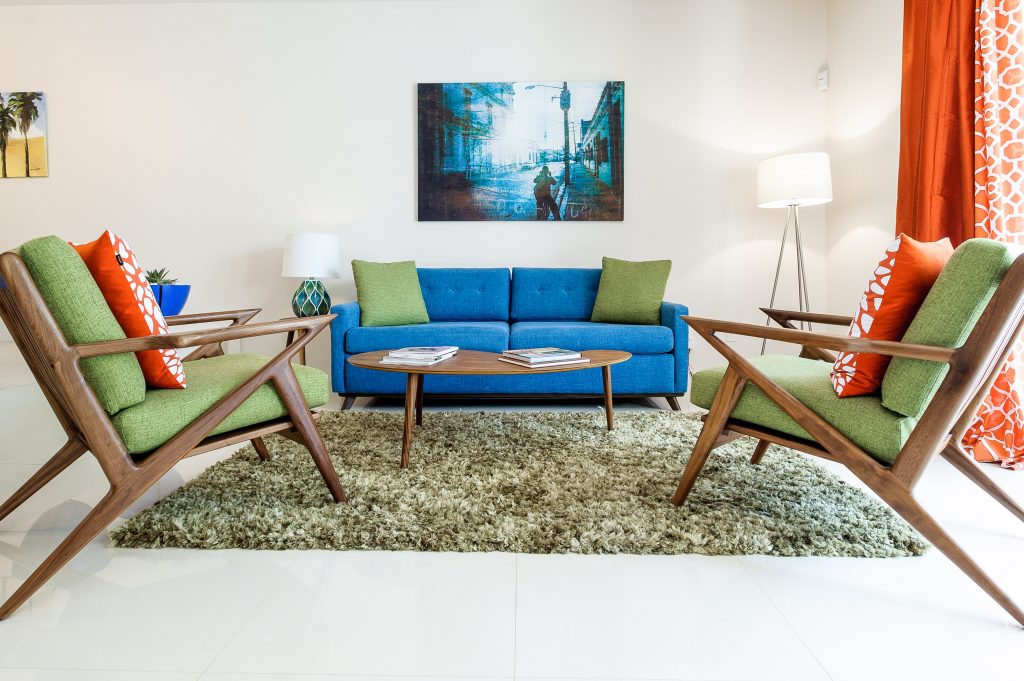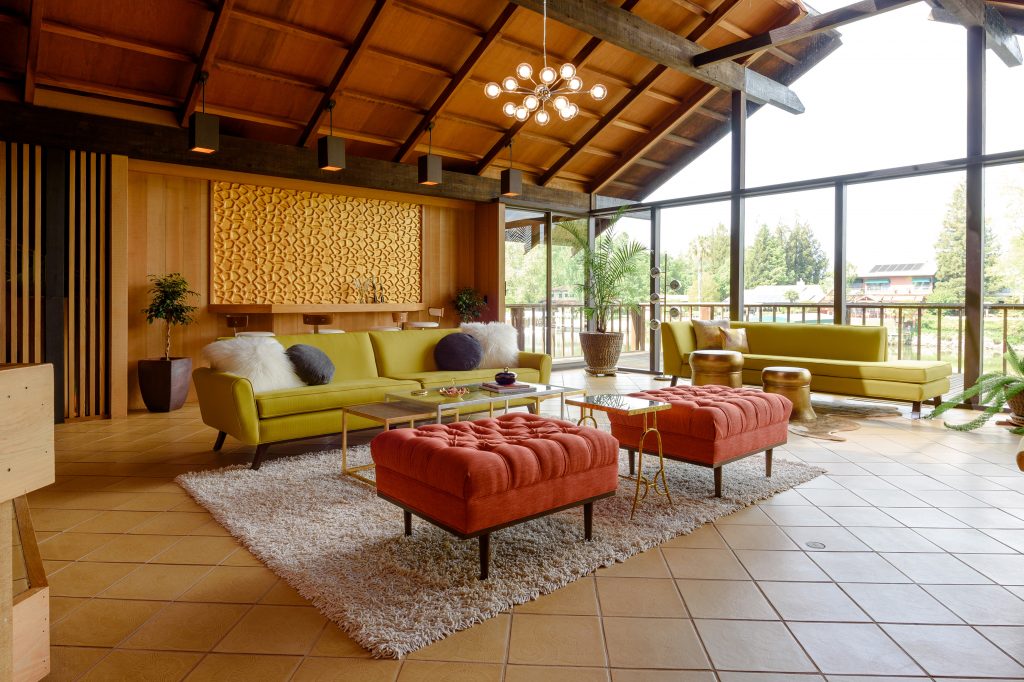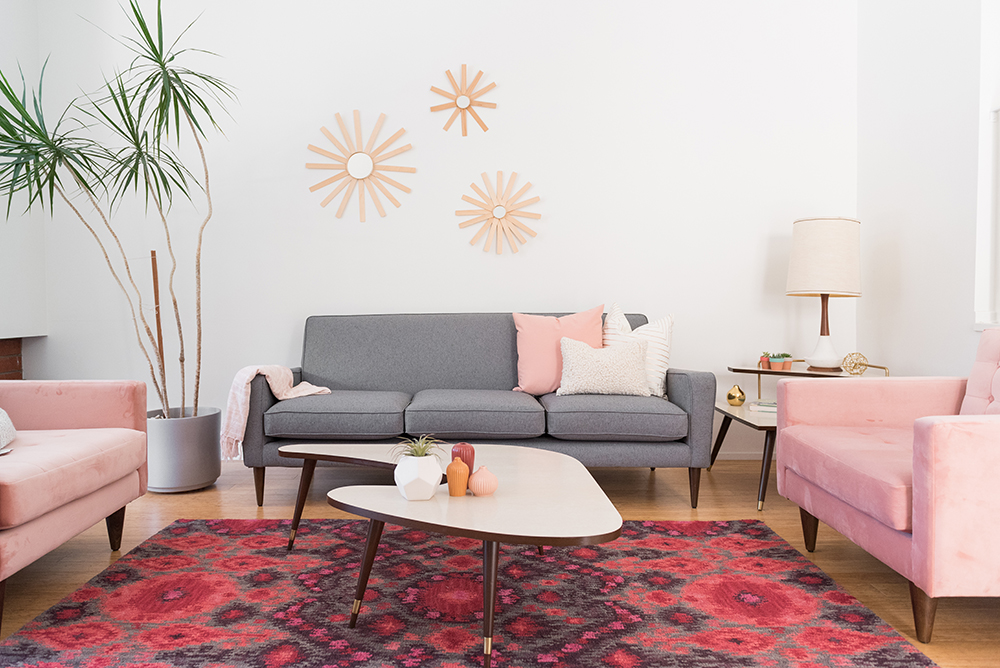
Your midcentury furniture is sacred. Perhaps you got a dilapidated Pearsall chair for a steal, lovingly refinished the wood and upholstered it with high-quality period fabric. Or maybe you invested in a new midcentury-style sofa, with bold upholstery and delicate wood detailing. Either way, it’s pristine and ready for use. Now, all you have to worry about is keeping it that way.
When you’ve worked hard and spent money on a statement furniture piece for your home, it’s hard not to want to just keep it away from kids, cats and crumbs. Luckily, if you take the right steps to protecting and cleaning furniture, you can keep it looking good and usable—and you don’t even need a plastic cover! We talked with Patrick Bliesener, Director of Customer Experience at Joybird Furniture, for some tips on how you can keep your favorite pieces looking as good as the day you (or your grandparents) bought them.

Protect + Prevent
To think of examples of how your furniture can get damaged, it doesn’t take too much creativity—but some damage may be happening without you even noticing. While pet claws, red wine or coffee spills and the sticky fingers of your little ones are fairly obvious causes for damage, “one that most people overlook is exposure to direct sunlight,” Patrick says. “The fact is that all fabrics will fade when exposed to direct sunlight, so while placing that new sectional right in front of the south-facing picture windows may look amazing, it could also cause the fabric on the top and back of it to fade. Over the course of several years the fading can become substantial and make the appearance of the item less than perfect.”
To minimize the effect of UV damage on your pieces that sit in direct sunlight, Patrick suggests selecting a fade-resistant fabric for your upholstery. Be sure to do your research on your pieces and fabrics to ensure you know how to protect your furniture for years to come.
For furniture that gets used every day, regular maintenance will prevent the usual wear and tear from lessening your piece’s appearance. Patrick suggests a frequent light cleaning to help keep upholstery looking just as good as the day you brought it home. “Vacuuming regularly will help remove dust mites and pet dander,” he says. “Blotting spills immediately will make removing any leftover stains a much easier process.”
But if you are hoping for a perfect solution for prevent stains and dirt altogether, be wary. “Some people prefer to apply an aftermarket stain guard to their furniture, but what they fail to realize is that many of these products contain harsh chemicals, such as PFCs, that can cause sickness and even cancer in some cases. Children and the elderly are even more susceptible to the adverse health effects of some of these chemicals,” Patrick says. “Instead of using these products, it is a much better choice to select a pet- and kid-friendly fabric that is easy to clean.”

Getting Down + Dirty
So, what if it’s time for a truly deep clean? Before you start pulling out the rags and cleaners, stop and check the labels on your beloved collection. “Make sure you’re aware of the cleaning code on your particular piece of furniture before attempting to deep clean it,” Patrick recommends. “Some fabrics require dry-cleaning solvents, and using a water-based cleaning product will do more damage than good. Other fabrics can be easily cleaned with distilled water and a drop of dish soap.” And he’s serious about the about distilled water part: “Never use tap water to clean any upholstery,” he says. “You will almost assuredly have unsightly water rings left behind by doing so.”
Labels will often be coded with letters as a shorthand for what kind of cleaner you can use on the upholstery. Furniture that can be cleaned using distilled water will have a “W” label, and pieces requiring dry-cleaning solvents will have an “S” label. Whatever type of cleaning code your piece has, make sure you have a cleaner with the same code. After that, Patrick urges avid cleaners to use their best judgement when buying over-the-counter products continaing harsh chemicals or known carcinogens. “Your family’s health is everything—make sure you know what’s in that bottle of cleaner and [are] aware of any dangers it might pose to your family and pets,” he says.
That’s all fine and good when it comes to upholstery, but some of your favorite midcentury pieces are probably wooden, at least in part. While Patrick recommends a light dusting and damp-cloth cleaning periodically, when wooden sofa legs and coffee tables see their fair share of gunk, you’ll need to give out some special TLC. “Over time, wood furniture will accumulate dirt and grime (and buildup of cleaning products or oils if you use them) and will require an occasional deep clean to remove the buildup,” he says. “Always check with your manufacturer for proper deep-cleaning instructions for wood products, and test any wood-cleaning products you intend to use in an inconspicuous area before using them on the entire piece.”

Durability’s In Style
True midcentury furniture is a gorgeous addition to your home, but for those with a lot of rambunctious pets and kids, putting your prized Kagan rocker or Eames lounger in the family room might be more stressful than it’s worth. While the word “durable” may not immediately bring to mind the stylish sofa you had hoped for, furniture that is both wear resistant and pleasing to the eye is an investment—and it’s not that hard to find, either. With durability and style on the forefront, sofas and chairs from Joybird Furniture are the perfect Midcentury Modern addition to the modern family. “Joybird builds heirloom pieces that should last a lifetime under normal use and can be passed down from generation to generation,” Patrick says. “Joybird uses only highly durable fabrics with high double-rub counts … The frames are corner blocked, glued (Joybird only uses water based glues that do not contain any harsh chemicals) and screwed and built using only kiln-dried woods.” All of this makes for a lasting piece that complements your vintage furnishings and retro vibe.
It goes without saying that modern-made pieces offer more flexibility in choice, but Joybird’s mission is to make each piece just for you and your family—down to every last detail. “Everything Joybird builds is made to order,” Patrick says. “You may purchase an item from Joybird and have it built using the materials/fabrics you select, and that item ends up being literally the only one in existence in that fabric and wood-stain combination.” But after all of that, what’s Patrick’s favorite thing about Joybird? “The ability to easily return any item for any reason for a full refund and the lifetime warranty,” he says. “That kind of peace of mind is hard to find.”
For more information on Joybird Furniture, visit joybird.com.












